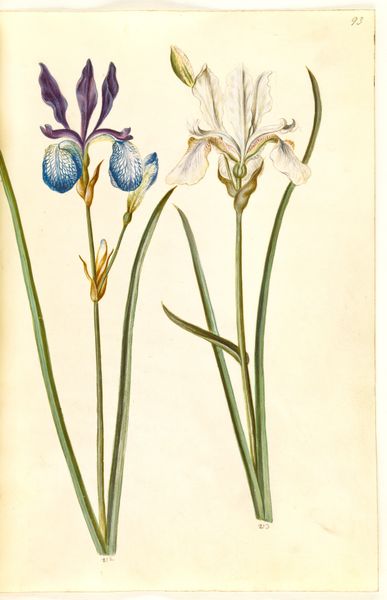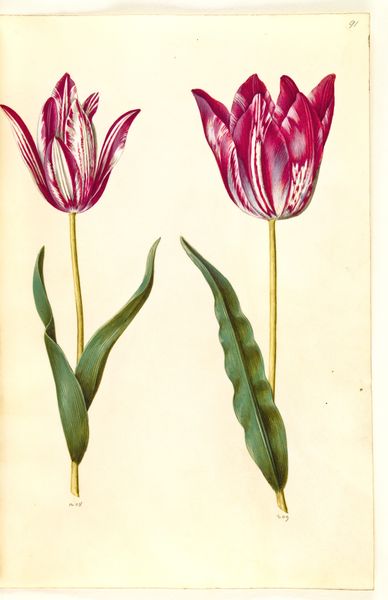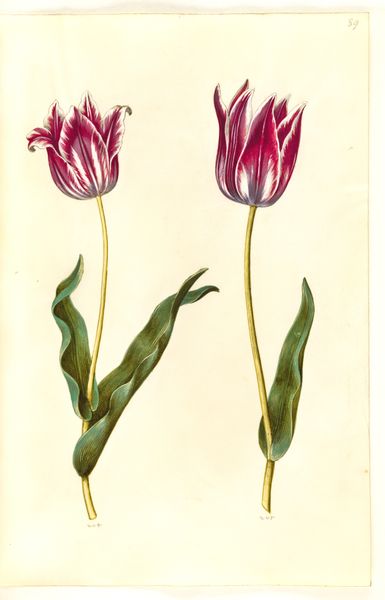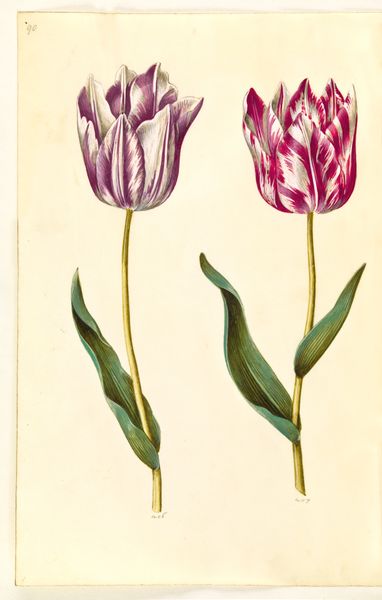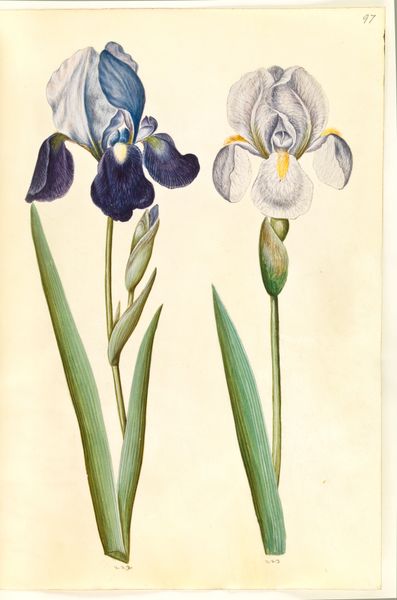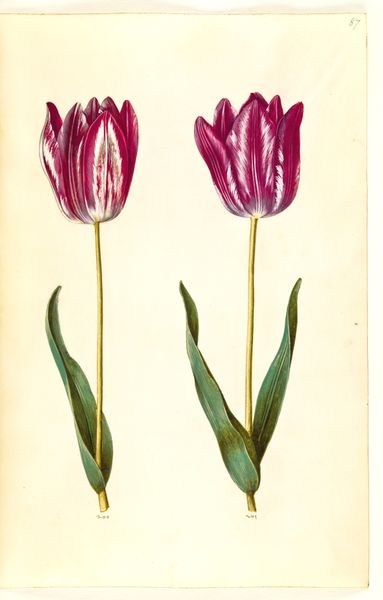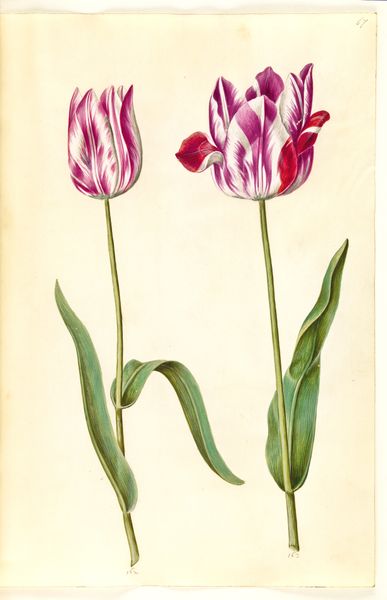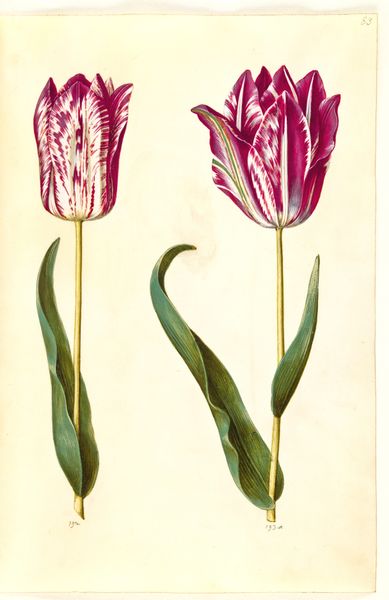
Iris persica (persisk iris); Iris lutescens eller Iris pumila (?) (dværg-iris eller lav iris) 1635 - 1664
0:00
0:00
drawing, gouache, watercolor
#
drawing
#
gouache
#
11_renaissance
#
watercolor
#
botanical drawing
#
watercolour illustration
#
botanical art
#
watercolor
Dimensions: 375 mm (height) x 265 mm (width) x 85 mm (depth) (monteringsmaal), 358 mm (height) x 250 mm (width) (bladmaal)
Curator: This is a botanical drawing by Hans Simon Holtzbecker from between 1635 and 1664, entitled "Iris persica (persisk iris); Iris lutescens eller Iris pumila (?) (dværg-iris eller lav iris)". It uses gouache and watercolor on paper. Editor: It's incredibly delicate. The colours are muted, the lines are fine and precise. It evokes a feeling of quiet observation and the patient labor that went into recording these details. Curator: Absolutely. Holtzbecker was working in a time where botanical illustration was crucial for scientific understanding, but also for the aesthetic pleasure of wealthy patrons who commissioned these works. Think about the social context; gardens as status symbols, the exotic allure of new plant species, and the skilled labor involved in cultivation, illustration, and, ultimately, the consumption of these images as luxury goods. Editor: Yes, I see that. I am especially drawn to the way he captured the veining in the leaves and the subtle colour variations within each petal. The composition, arranging the three irises at different angles, adds a sense of dynamism to an otherwise static subject. Note the masterful use of light and shadow to define form and volume, creating a convincing three-dimensionality on the flat surface. Curator: Exactly, it's more than just documentation. The quality of the pigment used, the paper itself – these choices speak to the resources available to Holtzbecker and his patron. Did the artist have a personal relationship to horticulture? This affects our analysis. Editor: Agreed. Furthermore, let's examine the artist's method of representing the flower, for example. By carefully selecting three examples that emphasize different stages in the life-cycle, he provides visual keys and promotes a sense of scientific clarity. This gives the work greater structure and visual depth. Curator: This makes me consider the value system in the art world. Botanical illustrations were not typically considered high art, but this shows an intricate level of craftsmanship and purpose connected with labor, materiality, and historical value. Editor: It’s a lovely demonstration of his understanding of form, function and structure of nature. A captivating and well-executed demonstration of beauty in simplicity. Curator: I completely concur; it certainly complicates the distinctions between art, craft, and science. Editor: It's refreshing to notice new details each time, a subtle tribute to the enduring impact of this drawing.
Comments
No comments
Be the first to comment and join the conversation on the ultimate creative platform.

